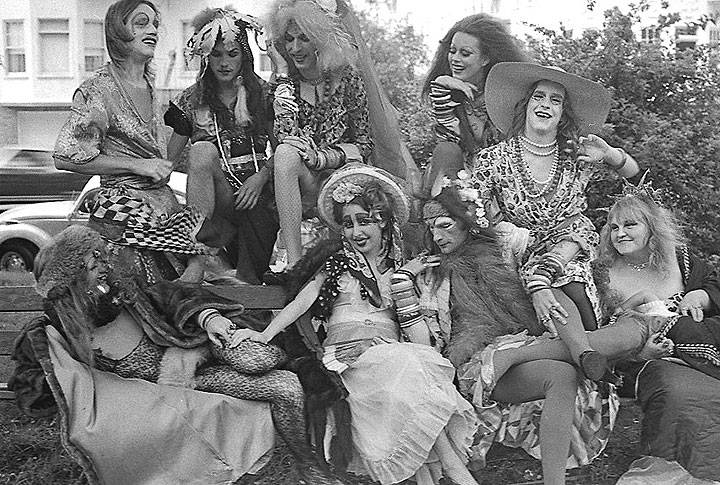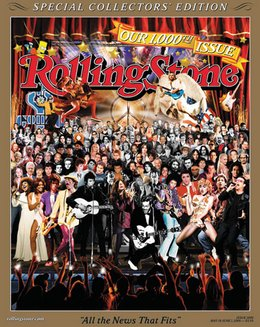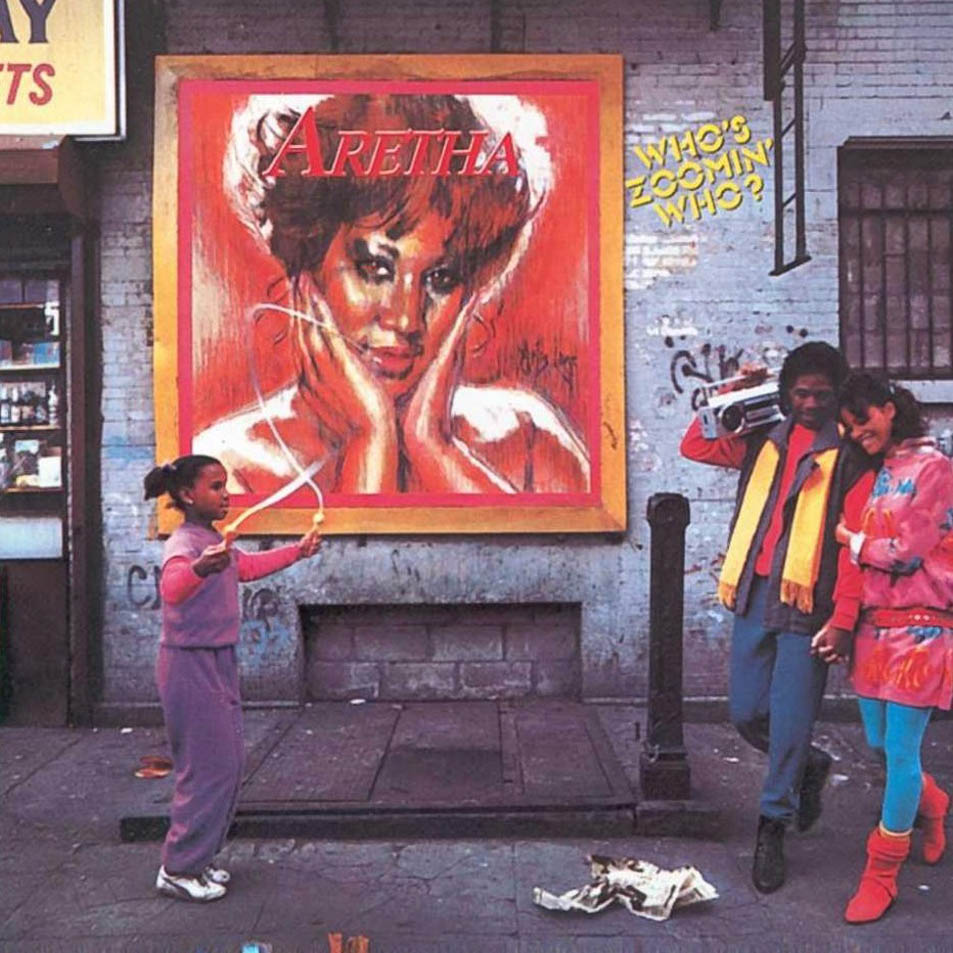
In the glittering firmament of music history, few stars burned as brightly and as defiantly as Sylvester James Jr. Known simply to the world as Sylvester, this American singer-songwriter transcended genres and defied expectations, carving out an indelible legacy primarily in disco, rhythm and blues, and soul. His was a presence as electrifying as his falsetto voice, marked by a flamboyant androgyny and an unyielding commitment to authenticity that resonated deeply with a generation seeking liberation and celebration. From the gospel choirs of Watts to the dazzling stages of San Francisco, Sylvester’s journey was a testament to the power of self-expression and the transformative magic of music.
His story is not merely one of chart-topping hits and dazzling performances; it is a profound narrative of self-discovery, community building, and unwavering activism in the face of immense adversity. Sylvester navigated a world often hostile to his very being, yet he did so with an inimitable grace and a fierce determination to be seen, heard, and celebrated on his own terms. His life encapsulates a pivotal era in American culture, mirroring the seismic shifts in racial justice, LGBTQ+ rights, and musical innovation that defined the late 20th century.
We delve into the multifaceted layers of Sylvester’s life, from his formative years that laid the groundwork for his unique artistry to the collaborative endeavors that propelled him to international stardom. It is a journey marked by both profound personal challenges and exhilarating triumphs, revealing how a sensitive, artistic soul from Watts became the “Queen of Disco” and a fearless advocate for his community. Join us as we uncover the genesis of his iconic sound, the friendships that sustained him, and the breakthrough moments that cemented his status as an unparalleled force in popular culture.

1. **The Genesis of a Soul: Sylvester James Jr.’s Watts Roots**Born on September 6, 1947, in the vibrant yet complex Watts district of Los Angeles, Sylvester James Jr. entered a world that would both nurture his artistic spirit and challenge his burgeoning identity. His origins were in a middle-class African-American family, a foundation that instilled a sense of heritage and community. His mother, Letha Weaver, herself from a relatively wealthy African-American family in Palestine, Arkansas, brought her children to the Palm Lane Church of God in Christ in South Los Angeles, where Sylvester’s musical journey truly began.
It was within the walls of this Pentecostal church that Sylvester first discovered the intoxicating power of gospel music, a sound that would profoundly influence his vocal stylings. An avid singer from the tender age of three, he regularly participated in gospel performances, showcasing a natural talent that captivated those around him. The church environment, while fostering his early love for music, also presented the first societal friction for young Sylvester.
Family and church members noted his “feminine” qualities and described him as “prim and proper,” preferring the company of women and his grandmother to that of other boys. He was “his own kind of boy — ‘born funny’,” often found indoors reading encyclopedias, listening to music, or playing his grandmother’s piano. His mother, Letha, notably defended his joy in dressing in her and his grandmother’s clothes, asserting he was not a girl, just a different kind of boy, and a valued part of their family.” However, this nascent self-expression was tragically marred at age eight by ual molestation at the church, an event that, despite his later claims of consensual interaction, led to his mother discovering his homosexuality. Viewing it as a “perversion and a sin,” the congregation’s disapproval forced Sylvester, at just 13, to cease his attendance, severing ties with the very institution that ignited his musical passion.

2. **The Disquotays: Forging Identity in 1960s Los Angeles**Having left home after an argument with his mother, Sylvester navigated the challenging terrain of adolescence and early adulthood, spending much of the next decade finding refuge with friends and, significantly, his grandmother Julia, who offered unconditional acceptance of his homouality. It was during this period, in the culturally charged 1960s, that Sylvester began to forge connections within the local gay Black community, culminating in the formation of a groundbreaking group they playfully named the Disquotays.
This collective of Black cross-dressers and transgender women, including his best friend Duchess, created a vibrant subculture of their own. They hosted lavish house parties, sometimes even at rhythm and blues singer Etta James’s home without permission, where they engaged in friendly competition, constantly striving to outdo each other in elaborate female attire and wigs. Biographer Joshua Gamson vividly depicted them as “fearless and heroic, defiant sissies who were forerunners of Stonewall and sixties counterculture, part of the dawning of gay liberation and African-American civil rights organizing.”
Sylvester’s romantic life also blossomed, with Lonnie Prince becoming his boyfriend during the latter part of the decade, a relationship described by friends as the “It couple.” Yet, this era of self-expression came with inherent risks. Cross-dressing was illegal in California, and Sylvester often hitchhiked in female attire, risking arrest. Although he avoided imprisonment for cross-dressing, he was arrested for shoplifting on several occasions. Despite these challenges and various odd jobs—from a McDonald’s cook fired for refusing a hairnet to a make-up artist at a mortuary—Sylvester embraced his burgeoning identity, becoming an integral part of a community that celebrated individuality in a world struggling to catch up. He even graduated high school at 21, appearing in his photograph in drag, a bold statement of his evolving self. By the end of the decade, as the Disquotays evolved, Sylvester himself began to refine his look, moving towards an androgynous style influenced by the hippie movement, a blend of masculine and feminine that would become his signature.

3. **San Francisco Beckons: The Avant-Garde World of The Cockettes**The lure of San Francisco, renowned as a haven for counterculture and gay liberation, proved irresistible to Sylvester, who had grown weary of Los Angeles and the fading Disquotays. In 1970, an invitation from Reggie Dunnigan at the Whisky a Go Go bar to join the “Chocolate Cockettes”—Black members of the famed avant-garde performance art drag troupe—set the stage for his next transformative chapter. The Cockettes, founded by drag queen Hibiscus, were a radical collective known for parodying popular culture, embracing free love, and immersing themselves in mind-altering substances, all while being deeply involved in the Gay Liberation movement.
Upon arriving in the city, Sylvester’s undeniable talent was immediately recognized. His falsetto voice and piano skills impressed the communal residents, leading to his inclusion in their upcoming show, *Radio Rodeo*. His early performances, like singing *The Mickey Mouse Club* theme song in a cowgirl skirt, hinted at the playful yet profound artistry that would define him. While he briefly resided in their communal home, the lack of privacy prompted a move to Market Street with fellow Cockettes, highlighting his unique blend of communal spirit and personal introspection.
Within the Cockettes, Sylvester stood out. He was one of the very few African-American members, and his refined, glamorous stage presence contrasted sharply with the troupe’s more surrealist and “war paint” aesthetic. He often commanded entire solo segments, captivating audiences with his interest in blues and jazz, performing imitations of idols like Billie Holiday and Josephine Baker. Adopting the pseudonym “Ruby Blue” and playfully declaring himself “Billie Holiday’s cousin once removed,” he not only amassed his own following but also earned particular praise from *Rolling Stone* magazine, which described him as “a beautiful Black androgyne who has a gospel sound with the heat and shimmer of Aretha.” This period, though short-lived, was crucial in honing his stagecraft and establishing his unique artistic voice before his inevitable departure to pursue a solo career, famously apologizing for “this travesty that I’m associated with” during a critically panned New York tour.

4. **The Rock Experiment: Sylvester and His Hot Band’s Early Ventures**Upon his return to San Francisco, the buzz surrounding Sylvester from his Cockettes performances, particularly his lauded solo act in New York, piqued the interest of *Rolling Stone* editor Jann Wenner. This led to an opportunity to record a demo album, financed by A&M Records, marking Sylvester’s serious foray into a solo music career. For this venture, he and his manager Dennis Lopez assembled a group of heteroual white males—Bobby Blood on trumpet, Chris Mostert on saxophone, James Q. Smith on guitar, Travis Fullerton on drums, and Kerry Hatch on bass—who would become “the Hot Band.” Their initial attempt, however, was deemed not commercially viable by A&M, and the album remained unreleased.
Undeterred, the Hot Band found a new home with Blue Thumb, contributing two songs for *Lights Out San Francisco*, an album compiled by local radio station KSAN. This exposure led to local gigs and, most notably, the coveted opening slot for glam rock superstar David Bowie at the Winterland Ballroom. Bowie himself acknowledged Sylvester’s magnetic stage presence, famously remarking that San Francisco “didn’t need him” because “They’ve got Sylvester,” a nod to their shared embrace of androgyny. The band’s sound began to shift from blues to a more commercially appealing rock.
In early 1973, under the aegis of Bob Krasnow at Blue Thumb, Sylvester and his Hot Band released their self-titled debut, originally intended to be called *Scratch My Flower*. Despite employing the Pointer Sisters as backing vocalists, the album, comprised mainly of covers, failed to capture the live intensity for which Sylvester was known. A subsequent album, *Bazaar*, included original compositions but also suffered from poor sales. Music journalist Peter Shapiro noted that Sylvester’s “cottony falsetto was an uncomfortable match with guitars” and that they both had “an unpleasantly astringent quality” in the records. Frustrated by the lack of commercial success and finding Sylvester “difficult to work with,” the Hot Band disbanded in late 1974, and Krasnow canceled his contract, leaving Sylvester once again at a crossroads, sans band and record deal.

5. **A Fortuitous Meeting: The Arrival of the Two Tons O’ Fun**After the disbandment of the Hot Band and a string of commercially unsuccessful attempts with new backing lineups, Sylvester found himself in a precarious position, professionally unmoored but artistically restless. A crucial turning point arrived with his new manager, Brent Thomson, who sagely advised him to shed his more flamboyant, androgynous image for a masculine presentation, believing “nobody is giving out recording contracts to drag queens.” This practical, if somewhat jarring, advice set the stage for one of the most significant collaborations of his career.
Thomson’s open auditions for new backing singers proved serendipitous. It was there that Sylvester was captivated by Martha Wash, a powerful vocalist whose talent was undeniable. He then posed a pivotal question, asking Wash if she knew another “large Black friend who could sing,” leading her to introduce him to Izora Rhodes. This introduction was nothing short of transformative. Though Sylvester affectionately referred to them as “the girls,” Wash and Rhodes soon christened themselves the Two Tons O’ Fun, a name that would become synonymous with Sylvester’s most iconic era and later, with their own mainstream success as the Weather Girls.
Biographer Joshua Gamson eloquently captured the magic of this union, noting that “Something clicked and sighed into place when Sylvester and the Tons got together.” This partnership was different; it tapped into a deeper wellspring of Sylvester’s heritage and identity. Gamson observed, “Izora and Martha were whom he came from and who he was… They sounded right with Sylvester, and looked just right, one on either side of him.” Their combined vocal prowess and stage presence provided the perfect foil and complement to Sylvester’s unique artistry, giving him the dynamic support he needed to truly soar. The three of them became a force to be reckoned with, creating an undeniable synergy that would soon propel them into the spotlight, laying the foundation for Sylvester’s global stardom.

6. **Solo Debut and Shifting Image: The 1977 ‘Sylvester’ Album**The electrifying partnership with the Two Tons O’ Fun swiftly bore fruit. Performing regularly at gay bars such as The Stud and The EndUp, Sylvester and his new band secured a coveted weekend residency at The Palms nightclub on Polk Street in September 1976. These nightly sets, a vibrant mix of covers and original compositions, drew significant attention, crucially catching the ear of Motown producer Harvey Fuqua. Recognizing Sylvester’s undeniable talent and the potent synergy with his backing vocalists, Fuqua extended a solo deal with Fantasy Records in 1977, marking a pivotal moment in Sylvester’s career trajectory.
In the middle of that year, Sylvester entered the studio to record his third album, the self-titled *Sylvester*. This album represented a deliberate and noticeable shift in his public presentation. The cover design itself was telling, depicting Sylvester in male attire, a conscious departure from the more glittery androgynous appearance of his earlier Cockettes days. This strategic image transformation aimed to broaden his appeal, positioning him as a more conventional rhythm-and-blues singer with wider commercial viability, a calculated move to break into the mainstream.
The musical content of *Sylvester* also reflected this evolution, heavily influenced by nascent dance music trends. It showcased Sylvester’s growing prowess as a songwriter, featuring original compositions such as “Never Too Late,” alongside astute covers of hits like Ashford & Simpson’s “Over and Over.” This particular track, released as a single, proved a minor hit in the United States and achieved even greater success in Mexico and Europe, foreshadowing his international appeal. The album and subsequent tours through Louisiana and Mexico City solidified his new direction, demonstrating that Sylvester was not only an extraordinary vocalist but also a savvy artist capable of adapting his image and sound to capture an ever-expanding audience.

7. **”Step II”: The Birth of a Disco Superstar and “Mighty Real”**The groundwork laid by his self-titled album and the burgeoning partnership with the Two Tons O’ Fun culminated in an explosion of global fame with the release of his second solo album, *Step II*, in September 1978. By this point, Sylvester’s celebrity was growing rapidly, especially within San Francisco’s vibrant LGBT community, where he became a regular performer at The Elephant Walk gay bar in the Castro district. He even forged a friendship with Harvey Milk, the pioneering openly gay politician, performing at Milk’s birthday party that year, deeply embedding himself in the social and political fabric of his community.
*Step II* marked Sylvester’s decisive embrace of disco, a genre then sweeping the Western world and deeply intertwined with the gay, Black, and Latino communities. Initially, Sylvester harbored some uncertainty about fully committing to disco, a genre dominated by powerful Black female artists like Donna Summer and Gloria Gaynor. However, he astutely recognized its immense commercial potential. A crucial addition to his studio band during this period was Patrick Cowley, whose innovative use of synthesizers deeply impressed Sylvester. This collaboration would prove instrumental, landing Cowley a spot as a back-up musician on Sylvester’s global tours and blossoming into a close friendship and profound artistic partnership.
Co-produced by Harvey Fuqua and released on Fantasy Records, *Step II* yielded two unforgettable disco anthems: “You Make Me Feel (Mighty Real),” written by James Wirrick, and “Dance (Disco Heat),” penned by Eric Robinson. Both singles soared to the top of the American dance charts and made significant inroads into the US pop charts, becoming commercial blockbusters both domestically and internationally. The album itself achieved gold certification, hailed by *Rolling Stone* as being “as good as disco gets.” Music journalist Peter Shapiro immortalized “You Make Me Feel (Mighty Real)” as Sylvester’s “greatest record,” the “cornerstone of gay disco,” and an “epochal record in disco history,” recognizing how Sylvester transcended traditional genre boundaries, propelling his falsetto “far above his natural range into the ether” to articulate “the exquisite bliss of disco’s dance floor utopia.”
Following the monumental success of *Step II*, Sylvester found himself at the zenith of disco fame, yet ever the innovator, he was already contemplating new sonic horizons. His subsequent album, *Stars*, released in 1979, was presented as his “first completely disco album,” but Sylvester, with characteristic foresight, also hinted it would likely be his last, signaling a desire to explore beyond the genre that had made him a global sensation. This period marked a fascinating balance between capitalizing on his reigning title as the “Queen of Disco” and charting a course toward artistic evolution.
The premiere of *Stars* in March 1979 was a grand affair, a sold-out spectacle at the San Francisco War Memorial Opera House that solidified his standing as a cultural icon. It was a testament to his profound local impact that during the performance, Mayor Dianne Feinstein’s aide awarded him the key to the city, declaring March 11th “Sylvester Day.” This remarkable recognition underscored not just his musical prowess but his significant role within San Francisco’s vibrant community. Though the live album *Living Proof*, recorded at this momentous gig, didn’t achieve significant sales, and the single “Can’t Stop Dancing” primarily charted in disco clubs, Sylvester’s dedication to his roots remained unwavering.
Indeed, even as his mainstream profile expanded, Sylvester consistently reaffirmed his deep connection to the gay community, performing prominently at the 1979 Gay Freedom Day parade in San Francisco and the London Gay Pride Festival. This commitment was a defining characteristic, showcasing an artist who never forgot the community that nurtured his rise. The period also saw the introduction of Jeanie Tracy to his backing vocal lineup, a talent Sylvester believed would seamlessly complement the Two Tons O’ Fun. However, as Martha Wash and Izora Rhodes embarked on their own successful venture as the Two Tons O’ Fun, their collaborative appearances with Sylvester became less frequent, a development he sometimes expressed bitterness about, though he also acknowledged no ill will. He sagely articulated his artistic independence, noting, “I think the media have built this disco thing up out of all proportions in my case and so while people may come to see me on the pretence of seeing a disco show, they soon realise that there is so much more to me.”
Read more about: From Gospel Choir to Disco Royalty: The Electrifying Journey of Sylvester, the ‘Queen of Disco’
_7_inch_Single_Cover.jpeg)
8. **Megatone Records and Creative Control – The Hi-NRG Era**Unshackled from Fantasy Records, Sylvester found himself at a pivotal juncture. Mainstream labels were wary of an artist still associated with the now-unpopular disco, and his recent albums had lacked chart-topping singles. With characteristic pragmatism, Sylvester recognized the shifting landscape, remarking in 1982 that “there’s nothing worse than a fallen star” clinging to “illusions” of past glory. His focus shifted from chasing major chart success to prioritizing creative control over his music, a testament to his unwavering artistic integrity.
This desire for autonomy led him to a new and profoundly influential partnership with Megatone Records, a small San Francisco company founded in 1981 by his friend and collaborator Patrick Cowley, alongside Marty Blecman. Megatone catered specifically to the gay club scene, offering Sylvester a space where his artistic vision could thrive uncompromised by corporate expectations. Under this new aegis, he released *All I Need* (1982), an album featuring mostly dance-oriented tracks infused with the contemporary sounds of new wave, while still allowing Sylvester to insist on including several ballads, reflecting his diverse musical inclinations.
The partnership with Megatone quickly yielded significant results, most notably with “Do Ya Wanna Funk.” Co-written with Patrick Cowley, this Hi-NRG dance track became an instant sensation, topping the US dance charts and achieving international pop chart success in July 1982. This collaboration with Cowley, a visionary in electronic music, allowed Sylvester to push his sound forward, embracing the frenetic, pumping energy of the burgeoning Hi-NRG genre. It was a vibrant renewal of his artistic spirit, proving that his electrifying presence was as relevant as ever in the evolving landscape of dance music.
Read more about: From Gospel Choir to Disco Royalty: The Electrifying Journey of Sylvester, the ‘Queen of Disco’

9. **Evolving Sound and Personal Life – ‘M-1015’ and Rick Cranmer**Even as the demand for his performances began to wane, leading to smaller venues and the use of pre-recorded tapes instead of a live band, Sylvester’s artistic curiosity remained vibrant. His 1984 album, *M-1015*, marked a further embrace of the Hi-NRG sound, infusing it with elements of electro and rap, showcasing his adaptability and willingness to experiment with emerging genres. Though he didn’t write any of the tracks himself, collaborating with figures like Kessie and Morey Goldstein, the album featured increasingly ually explicit lyrics in songs such as “How Do You Like Your Love” and “Sex,” reflecting a bold and uninhibited aspect of his artistic expression.
Beyond his professional life, 1984 also heralded a significant development in his personal world. Sylvester entered into a relationship with architect Rick Cranmer, a partnership that brought a new dimension of intimacy and stability to his life. They moved into a new apartment in the hills, a personal sanctuary where Sylvester infused his flamboyant spirit into the decor, notably adorning his powder room with posters and memorabilia of Divine, the iconic drag queen whom he had briefly known during his Cockettes days. This domestic bliss provided a grounding counterpoint to his demanding career.
The following year, Sylvester achieved a lifelong dream, a testament to his enduring ambition and talent. He and Jeanie Tracy were invited to provide backing vocals for none other than the legendary Aretha Franklin on her album *Who’s Zoomin’ Who?*. This collaboration was not just a professional highlight but a deeply meaningful validation for an artist who had drawn so much inspiration from gospel and soul traditions, allowing him to stand alongside one of his musical idols.
Read more about: Defying Fate: The Electrifying Life and Enduring Legacy of Disco Icon Sylvester

10. **The Enduring Legacy – Personal Loss and Final Act of Activism**The personal triumphs and artistic declarations of this period were tragically intertwined with the escalating shadow of the HIV/AIDS epidemic. In 1985, Sylvester’s beloved partner, Rick Cranmer, received an HIV diagnosis. As there was no known cure, his health rapidly deteriorated, and he passed away on September 7, 1987, leaving Sylvester utterly devastated. This profound loss was a deeply personal tragedy that underscored the wider devastation gripping his community, fueling his already fierce resolve to combat the disease.
Sylvester himself succumbed to complications arising from the HIV/AIDS virus on December 16, 1988, silencing one of music’s most unique and powerful voices. Yet, even in his passing, Sylvester orchestrated one final, heroic act of activism. He meticulously ensured that all future royalties from his extensive body of work would be bequeathed to San Francisco-based HIV/AIDS charities, transforming his artistic legacy into an ongoing source of support for those affected by the very disease that claimed his life. It was a selfless and enduring testament to his fierce dedication to his community.
Read more about: Jamie Oliver: A Culinary Odyssey – The Enduring Influence of a Global Food Visionary, From Humble Pub Kitchens to International Acclaim
Sylvester’s impact reverberates far beyond the dance charts. During his lifetime, he was honored with the key to the city of San Francisco, a city that recognized him as its “undisputed First Lady” and where he attained particular recognition. Posthumously, his towering contributions to music were celebrated with his induction into the Dance Music Hall of Fame in 2005. His compelling life story—from gospel singer to avant-garde performer, from disco sensation to unwavering activist—has been immortalized in biographies, documentaries, and musicals, ensuring that the fearless artistry and cultural significance of Sylvester James Jr. will continue to inspire and resonate for generations to come. His was a life lived with unyielding authenticity, leaving behind an indelible mark on music, on the LGBTQ+ community, and on the very fabric of popular culture.



